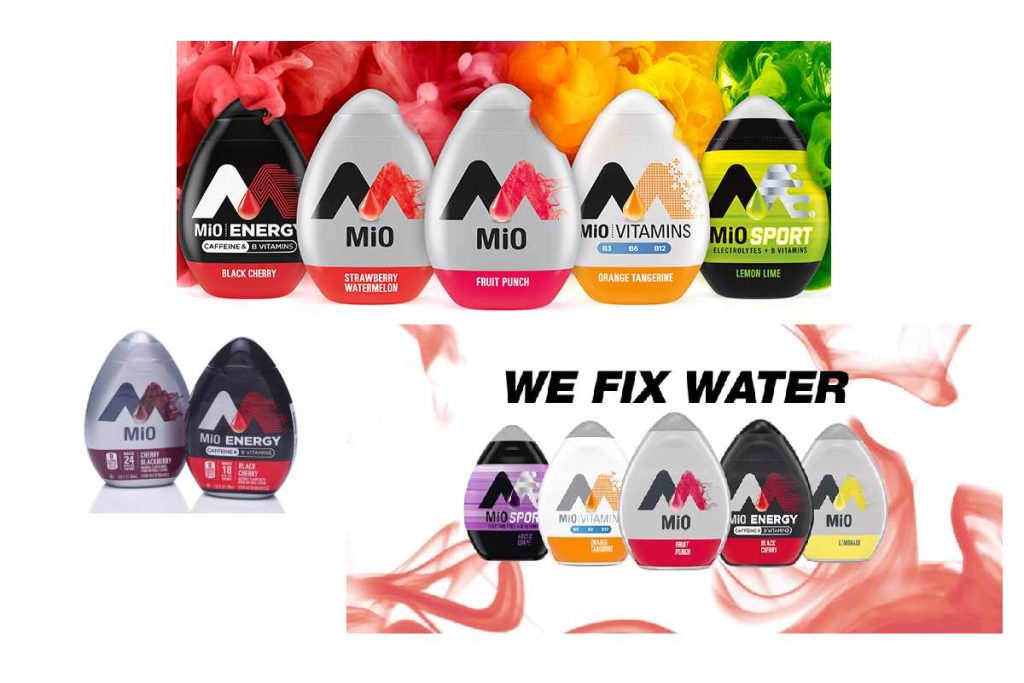Is MiO Bad for you
Drinking enough water is important for good health and well-being. However, not everyone enjoys the taste — or lack thereof — of plain water. They may seek alternatives to increase their fluid intake.
Water-enhancing products, such as MiO, have become popular for their ability to flavor water without adding sugar or calories. In this article, we explain what MiO is, how it’s used, and whether it’s good for your health.
Table of Contents
What is MiO made with?
Three of the four MiO product lines — Electrolytes, Vitamins, and Energy — advertise that they provide 10% of your daily needs of the vitamins B3, B6, and B12.
Each product line has multiple flavors. Most flavors contain the artificial sweeteners acesulfame potassium (Ace-K) and sucralose. Just two of the five flavors from the MiO Vitamins line are advertised as being “naturally sweetened” with stevia leaf extract.
MiO Energy is the only product line that contains caffeine. It comes in eight flavors — two of which contain coffee — and contains 60 mg of caffeine per serving. All Energy flavors also contain taurine, guarana, and ginseng
How is it used?
It’s estimated that 16–28% of adults are often dehydrated, with older adults being more at risk.
Dehydration may be linked to chronic diseases and can lead to reduced cognitive and physical functioning. Severe dehydration can even lead to hospitalization, so it’s important to stay hydrated.
If you struggle to drink enough water, using a flavor enhancer like MiO may boost your daily water intake.
Each bottle of MiO contains just 1.62 ounces (48 mL) but provides 10–24 servings depending on the product.
Here’s a quick guide for how this product should be used:
- Serving size. One serving of MiO is 1/2 teaspoon (2 mL) and flavors 8 ounces (237 mL) of water.
- Dilute it. This is a concentrated liquid designed to flavor water. Thus, it should be diluted and not drunk directly from the container.
- Mix it. You can mix any of the MiO flavors as you’d like; however, don’t mix them with alcohol.
- Expiration. MiO should be used within 30 days after opening. It does not need to be refrigerated, so you can easily take it with you on the go.
- Storage. Don’t leave it in your car — excessive heat can affect the quality. Likewise, MiO shouldn’t be frozen as-is, although the company suggests that you can make MiO-flavored ice cubes.
- Travel. It has a spill-proof lid with an audible double click, claimed to make it safe and convenient for travel. MiO can be taken on a plane, although it may spill due to air pressure changes when in flight.
- Recycling. The bottle is recyclable, with #7 plastics.
Flavors and calories
MiO is calorie-free, so you can drink it without worrying about excess calories and weight gain.
The MiO product lines have a variety of flavors, ranging from black cherry and lemonade in the Original line to iced java and açai berry in the Energy line.
To find your favorite flavor, you can purchase a variety pack in certain online shops. This way, you get the chance to try different options while potentially saving some money.
Ace-K, sucralose, and stevia leaf extract — the types of sweeteners used in MiO — are all generally recognized as safe (GRAS) by the Food and Drug Administration (FDA). Still, research on their safety is ongoing.
Ace-K and sucralose
Low and no calorie sweeteners (LNCS) provide sweetness to foods and drinks without adding calories.
Interestingly, the LNCS sucralose is 385–650 times sweeter than regular table sugar, known as sucrose. This means you need only minuscule amounts to sweeten food or drinks.
Despite their strong sweet taste and lack of calories, their use remains controversial — and their health benefits and environmental safety are often questioned.
For instance, a 2020 review showed that Ace-K remains in the environment for a long time. At this time, it’s estimated to pose a low threat to aquatic life.
It’s also worth noting that in mice studies, Ace-K increased weight gain in male mice and disrupted the gut microbiome. Further human research is needed to determine if it also has detrimental health effects in humans.
It was initially believed that artificial sweeteners weren’t digested by the body and didn’t raise blood sugar or insulin levels. However, both animal and human studies have now shown that sucralose is partially digested and alters blood glucose and insulin.
Further, a small mouse study suggests that sucralose may be a weak mutagenic. A mutagenic agent may increase the risk of DNA mutations and cancer in your body. Still, long-term research in humans is needed to determine if these findings apply to humans.
Stevia
Meanwhile, Stevia is plant-based. It’s extracted and purified from the Stevia rebaudiana Bertoni plant, native to South America. Although it’s 50–350 times sweeter than regular sugar, it’s not cariogenic, meaning that it doesn’t cause tooth decay.
Stevia is the least studied LCNS to date. Still, it’s been shown to decrease appetite and not increase post-meal blood sugar levels.
It’s also being investigated for potential therapeutic benefits — including anti-inflammatory, antioxidant, antidiabetic, and antihypertensive properties — although more research in humans is needed.
The bottom line
MiO is a concentrated liquid intended to add flavor to water. It may help you drink more water throughout the day without adding extra sugars or calories.
Three of the four product lines are caffeine-free, and all are kosher and vegetarian-friendly.
Most of its products contain artificial sweeteners called acesulfame potassium (Ace-K) and sucralose. This brings their environmental safety and health benefits into question as these sweeteners remain controversial food additives.
Overall, whether or not you choose MiO is up to you. Just keep in mind that there are natural alternatives like herbs and fruit that don’t include unnecessary sweeteners and preservatives.
